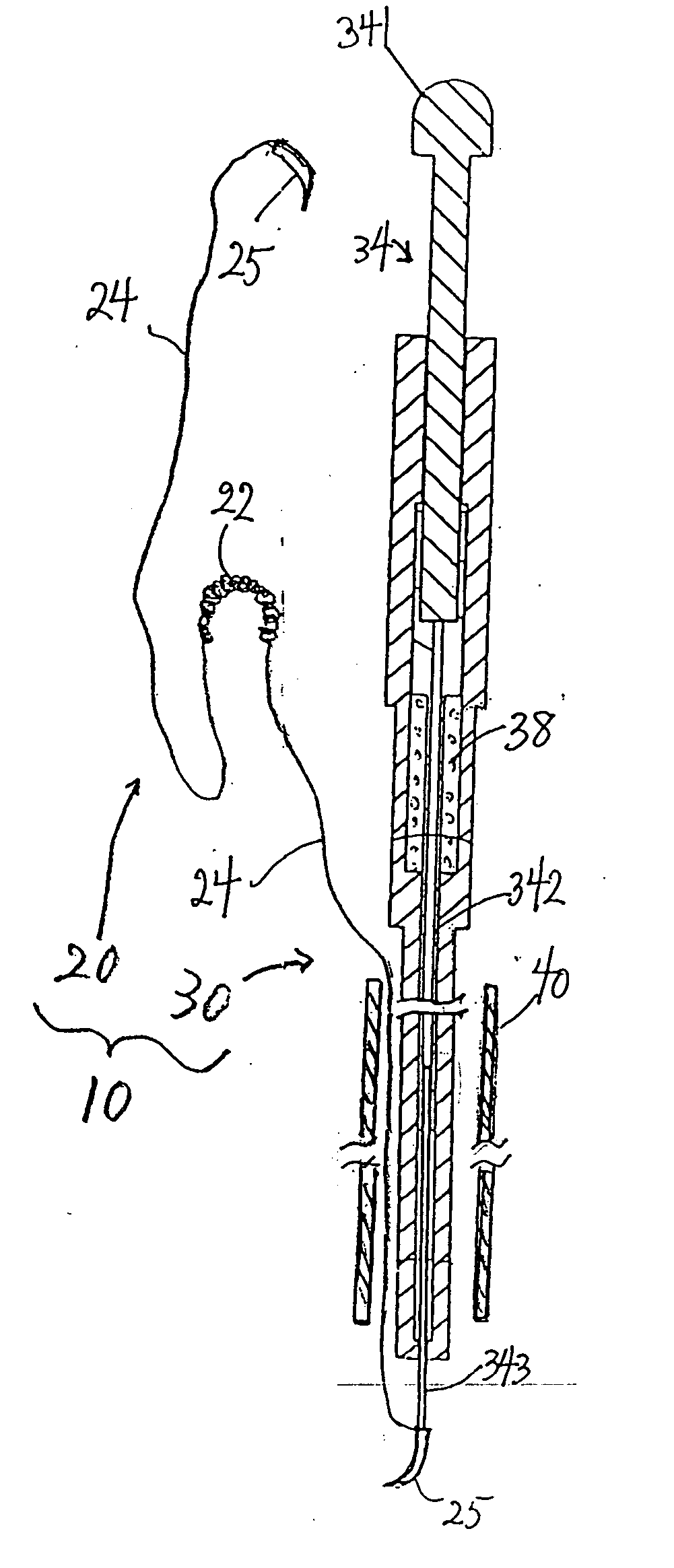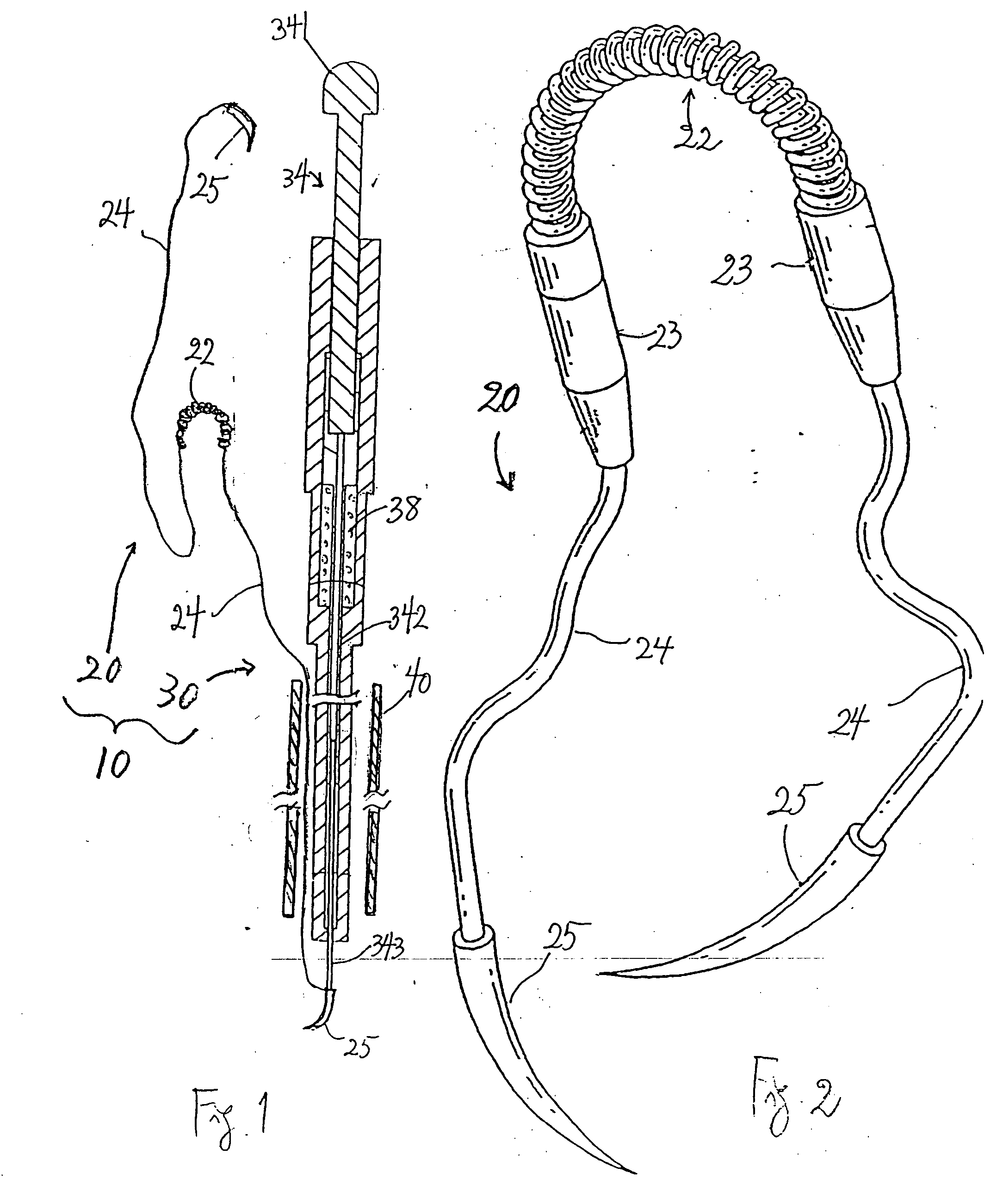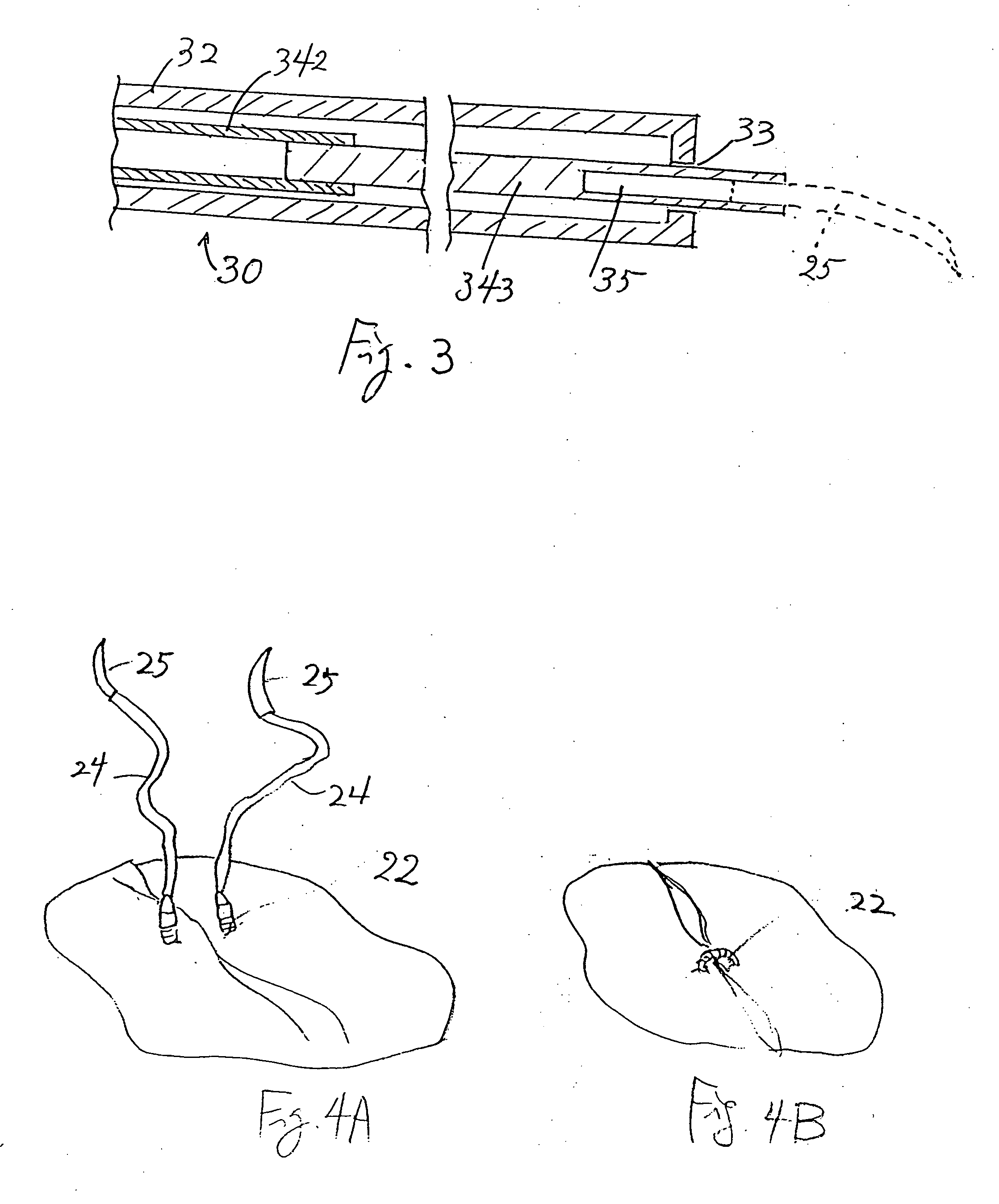Minimally invasive valve repair procedure and apparatus
a valve and minimally invasive technology, applied in the field of minimally invasive valve repair, can solve the problems of long recovery time, knot tying, cumbersome suture management, etc., and achieve the effect of reducing the distance of separation
- Summary
- Abstract
- Description
- Claims
- Application Information
AI Technical Summary
Benefits of technology
Problems solved by technology
Method used
Image
Examples
Embodiment Construction
[0018] The invention is described next by way of examples. FIG. 1 shows schematically a tissue-connector apparatus 10 embodying this invention for a minimally invasive procedure. Described briefly, the apparatus 10 consists of a clip assembly 20 and a needle holder 30, which will be described next sequentially in detail.
[0019] The clip assembly 20 according to this embodiment may be referred to as the double-arm clip assembly, characterized as having a clip 22 of a self-closing type with two end points each connected through a flexible member 24 such as a suture to a tissue penetrating needle 25 (as disclosed, for example, in aforementioned U.S. patent applications Ser. Nos. 09 / 259,705 and 09 / 260,623 both filed Mar. 1, 2000, both of which are herein incorporated by reference). Each of the needles 25 has a tissue-piercing sharp point and is connected to a corresponding one of the flexible members 24. As shown more clearly in FIG. 2, the two end points of the clip 22 are each provide...
PUM
 Login to View More
Login to View More Abstract
Description
Claims
Application Information
 Login to View More
Login to View More - R&D
- Intellectual Property
- Life Sciences
- Materials
- Tech Scout
- Unparalleled Data Quality
- Higher Quality Content
- 60% Fewer Hallucinations
Browse by: Latest US Patents, China's latest patents, Technical Efficacy Thesaurus, Application Domain, Technology Topic, Popular Technical Reports.
© 2025 PatSnap. All rights reserved.Legal|Privacy policy|Modern Slavery Act Transparency Statement|Sitemap|About US| Contact US: help@patsnap.com



